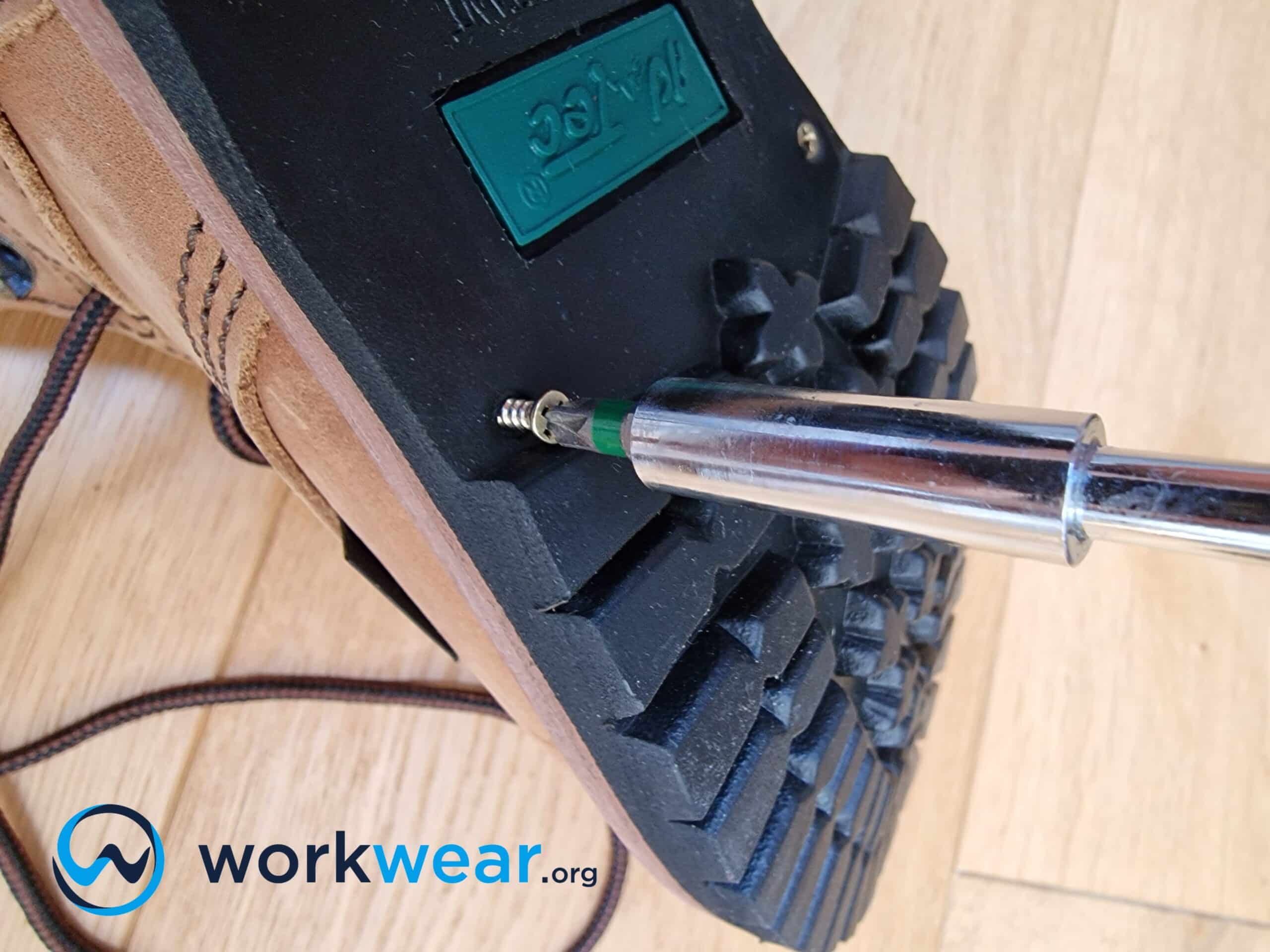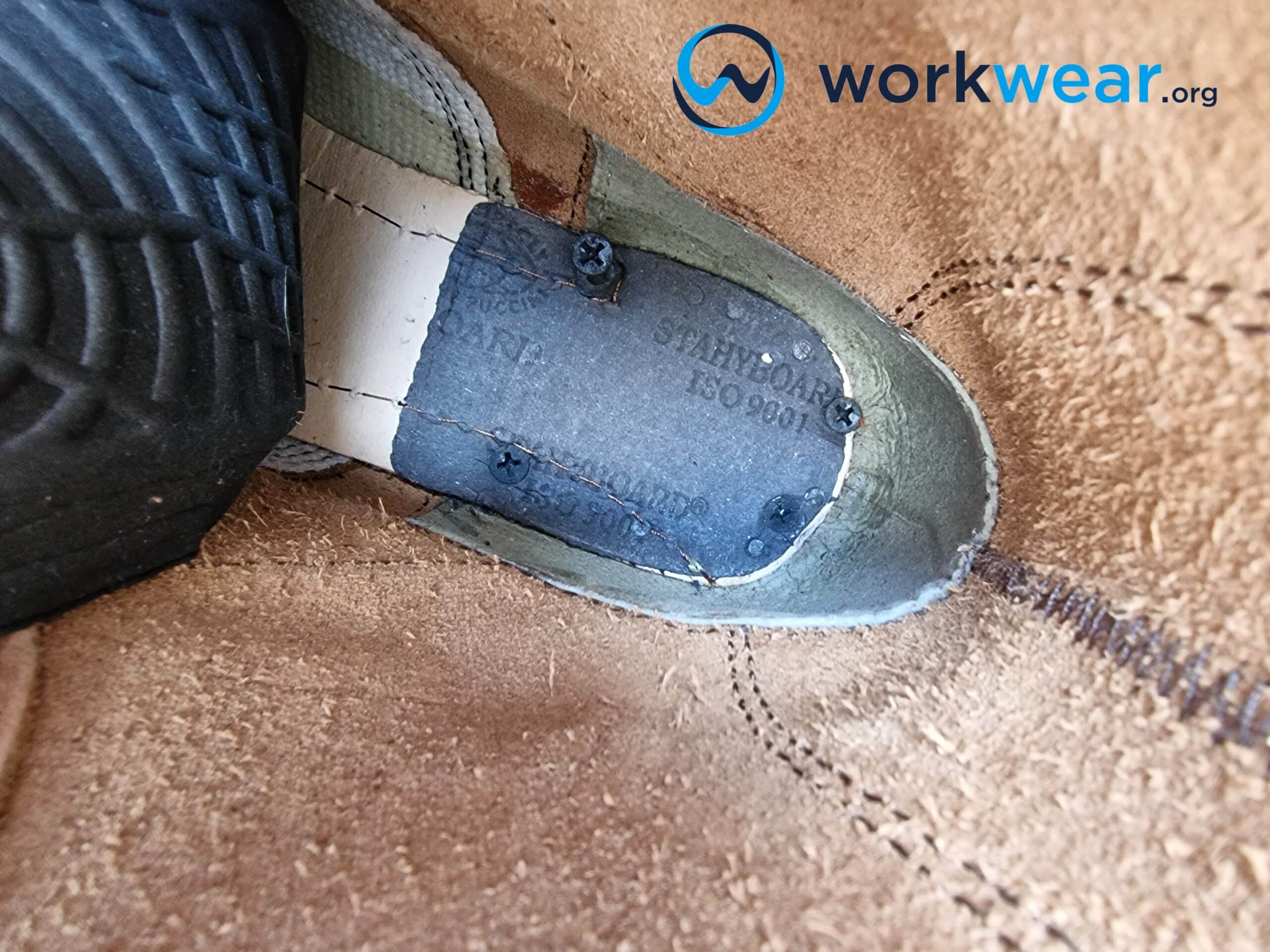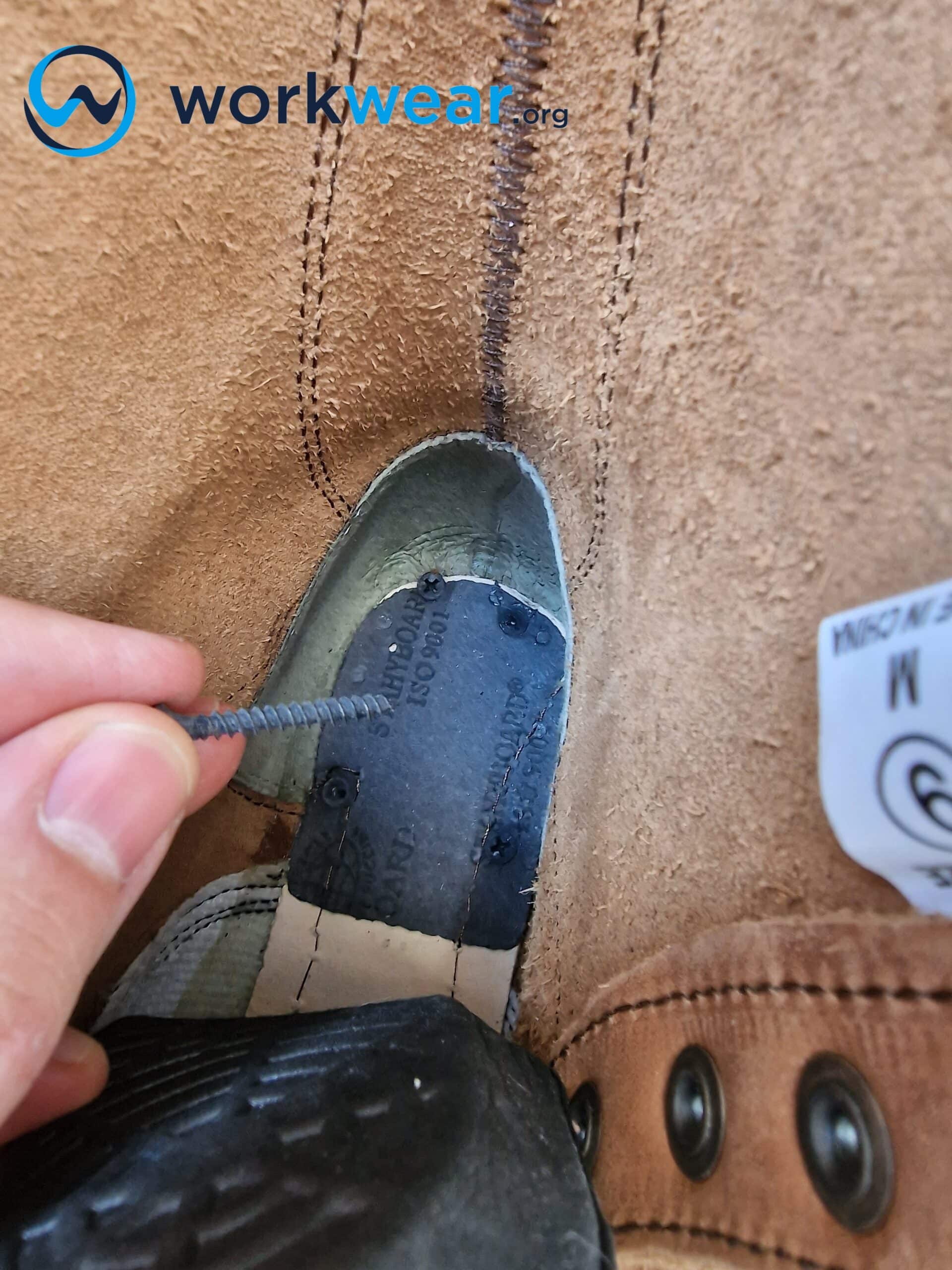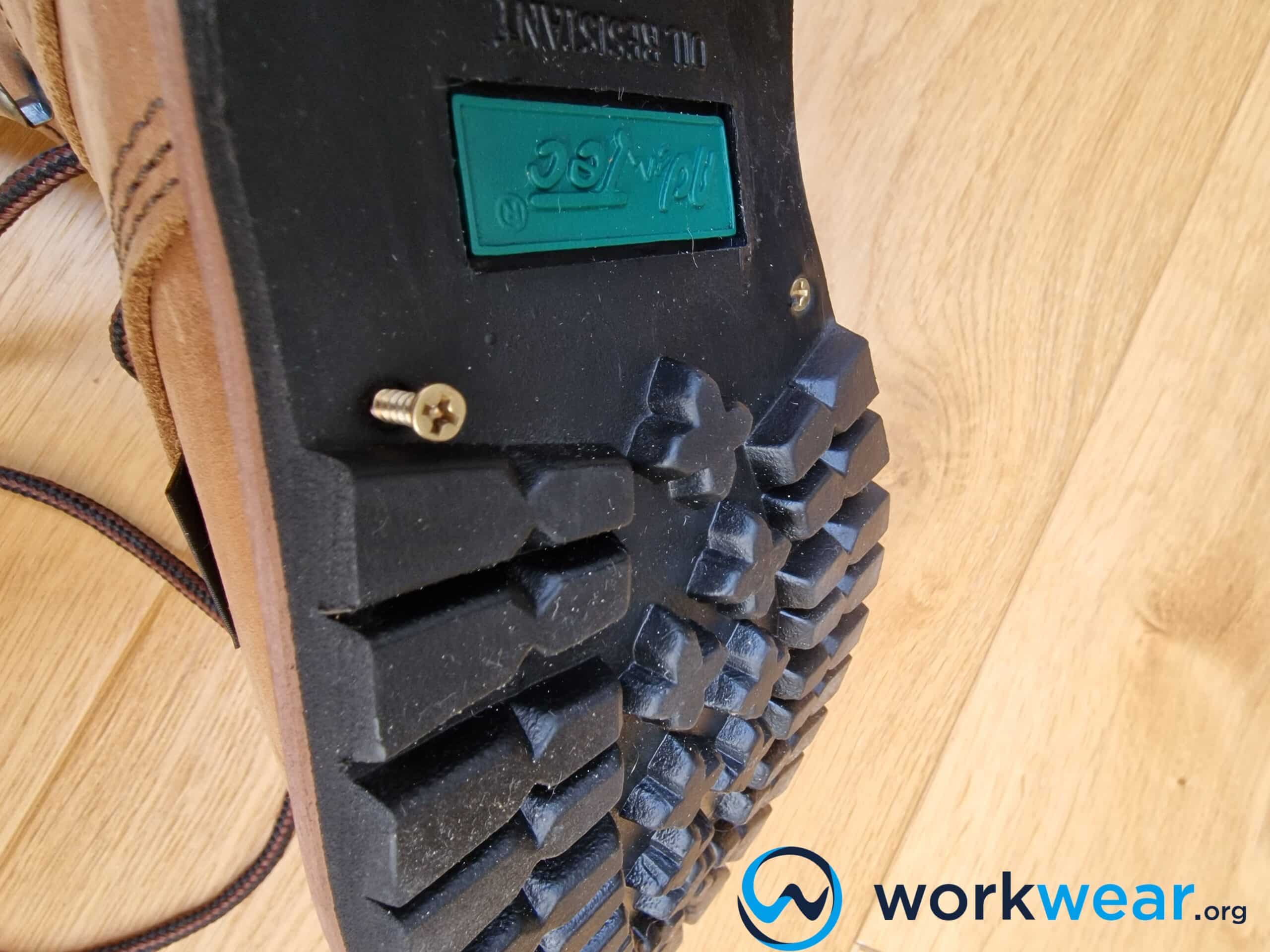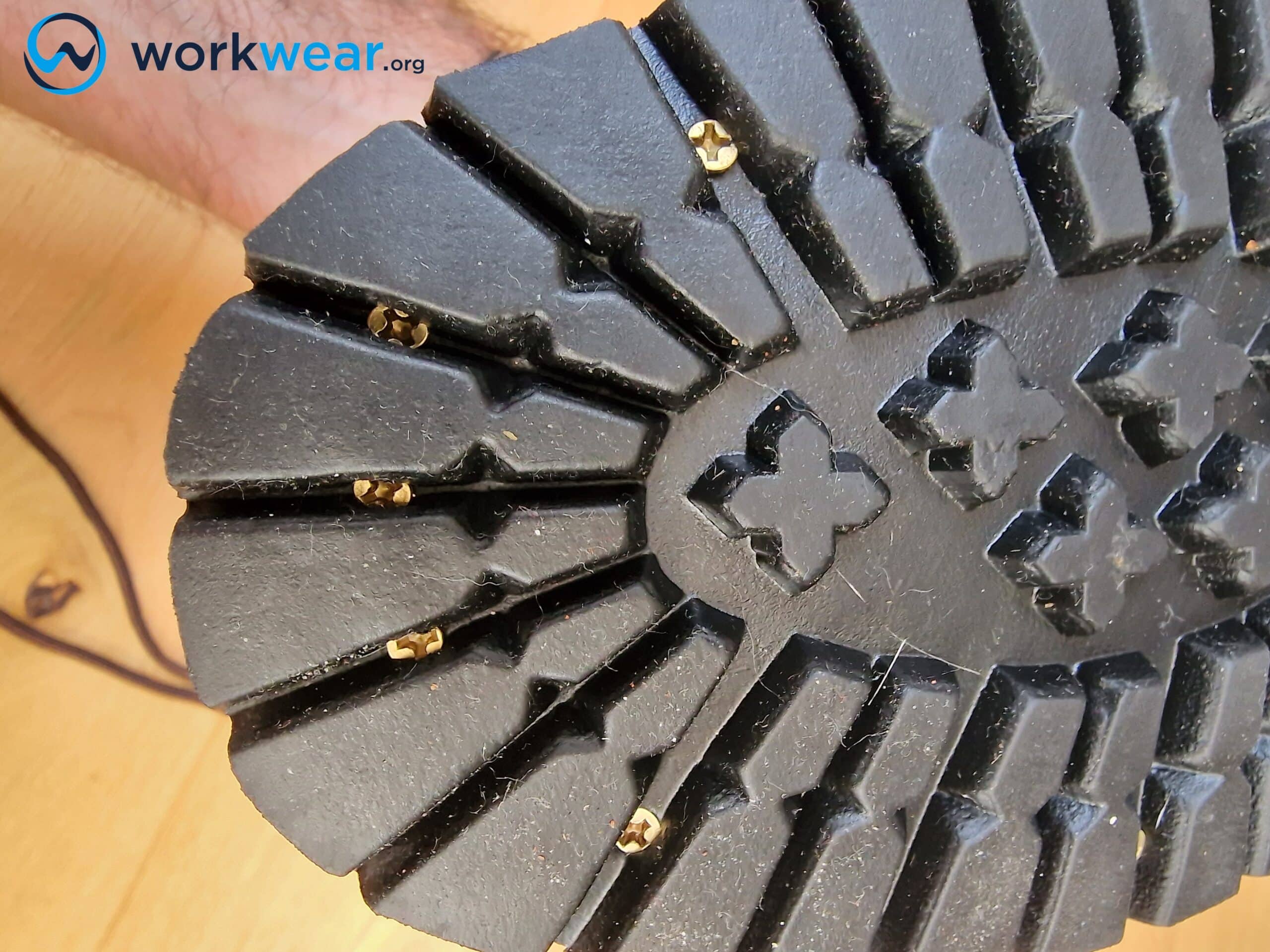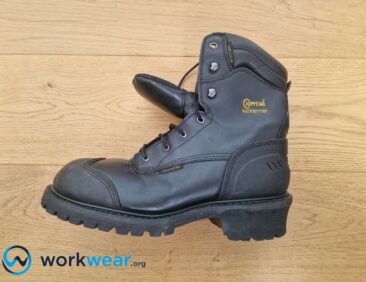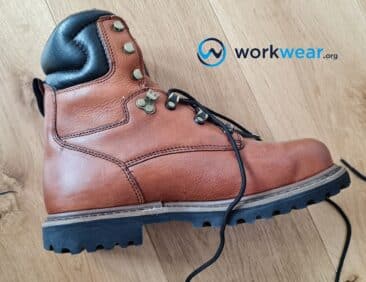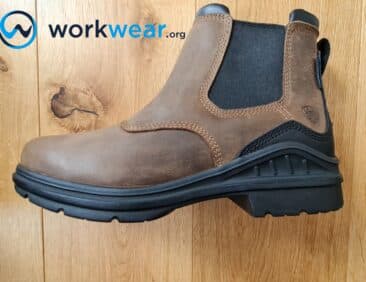Work Boots With Screws on The Soles
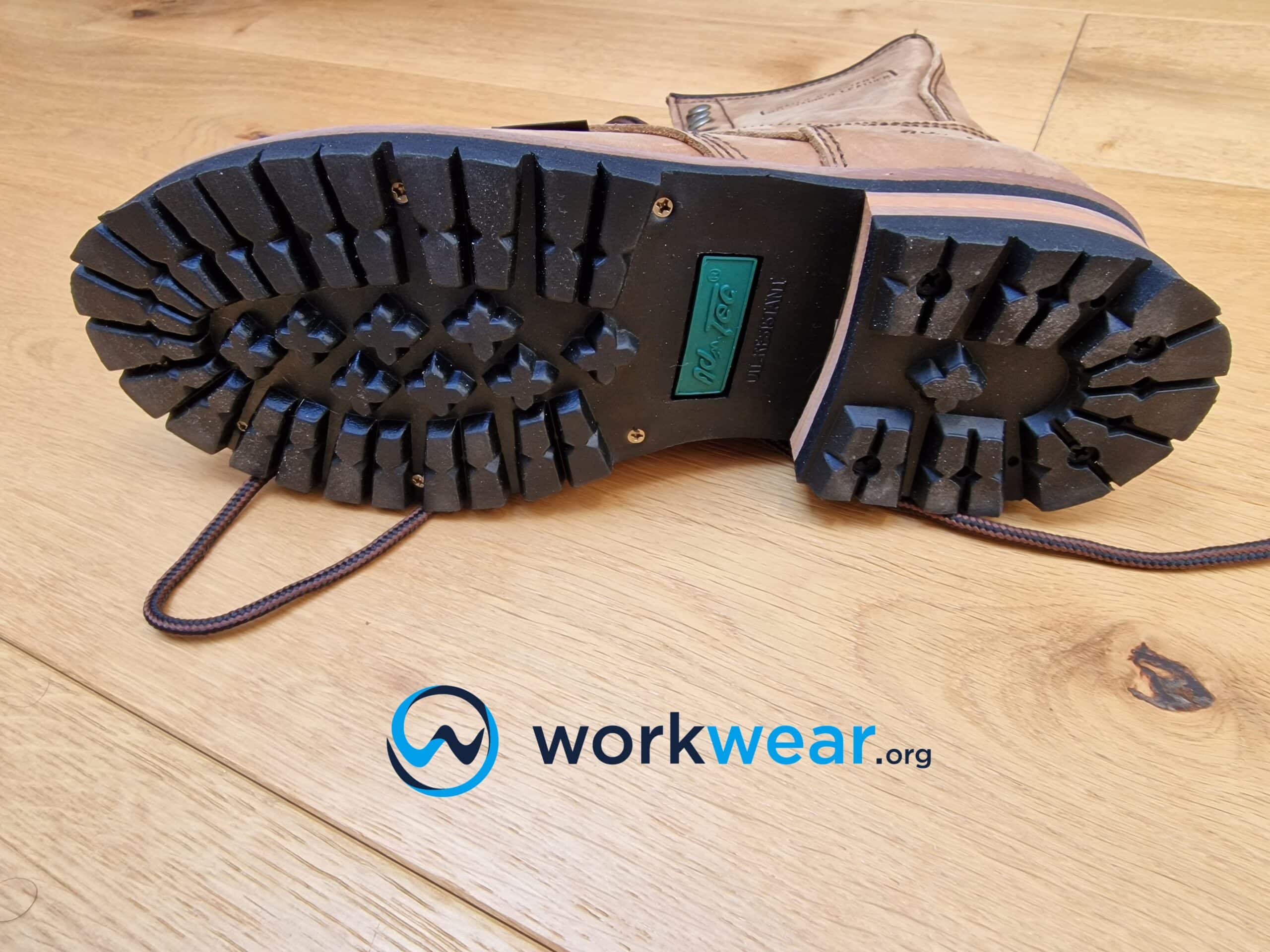
Work boots are built to last through the demanding settings of different job sites. It’s quite normal to see boots with thick rubber soles that are strong enough to withstand the beating of heavy use in tough surroundings. However, some people may be surprised to see tiny screws embedded into the outsole. What are these screws for – are they just decorative, or do they serve a specific function? We’ll answer that question and offer more information about this topic in this article.
What’s the purpose of screws in work boot soles?
Screws that are inserted into work boots have two main purposes, namely:
For reinforcement
It’s common to see work boot soles attached to the upper by stitching and gluing. While there’s nothing wrong with these methods – and both offer long-lasting performance as well – using screws can reinforce the bond between the upper and sole. The screws significantly increase the strength of the sole’s connection to the boot’s structure so that the sole won’t completely fall off even when the glue or stitching starts to fail due to extensive use.
It’s worth noting that screw-in soles differ from spiked soles, which focus on improving the boot’s grip on challenging surfaces.
For recrafting
Work boots that have soles attached with screws can be recrafted. This means that when the outsole has significantly worn down, it can be detached from the boot’s body with the help of the screws. A new sole can then be used to replace the damaged one and secured in place with the screws, along with stitches and glue. The screw-in design extends the boot’s life as only the sole needs to be replaced if it wears away after extensive use.
Types of Work Boots with Screws
It’s not common to see screws on the soles of conventional work boots. This type of enhanced construction is seen in specific work boots, as discussed below.
Logger Boots
Logger boots take a beating with the job’s heavy lifting. They’re constructed to last through the most difficult tasks and terrains, with outsoles attached by heavy stitching and reinforced with screws. The screw-in soles are designed to keep the sole more strongly bonded to the boot, allowing it to perform remarkably well in tough settings and helping preserve the glued-on or strongly stitched attachment.
Firefighter Boots
Firefighter boots are constructed with materials that are not only durable to keep up with challenging activities but are also resistant to damage – even when frequently exposed to high temperatures. These boots can be divided into three categories – duty boots, station boots, and wildland firefighting boots. The outsoles of firefighters’ boots feature materials that won’t easily melt when exposed to extremely hot surfaces. Screws are fixed into the sole as a reinforcement, ensuring that the sole’s attachment to the upper remains intact in case the outsole material falls apart due to the intense heat.
Popular Work Boots with Screws
Ariat Pro Crepe Light is an exclusive Ariat rubber blend that delivers maximum wear resistance and superior performance compared to other crepe outsoles used in Western boots. Pro Crepe Light outsoles have structures that are 30% slimmer compared to conventional crepe outsoles, providing enhanced comfort without the extreme bulk. Additionally, the right amount of rebound gives an energy boost to each step for longer walking comfort. Each of these outsoles features a heel tap that increases slip resistance and durability for long-lasting functional benefits, although they aren’t recommended for exceptionally unstable or slippery surfaces.
AdTec 9-Inch Crazy Horse Leather Work Boot
With its premium silhouette and materials, this logger boot is strong enough to keep up with tough job conditions without easily falling apart. The interior feels comfortably foamy, especially on the heel area, so it’s easier to avoid foot pain even after standing or walking for hours. Even with the 9-inch shaft, this boot keeps its weight in check as it doesn’t feel as heavy or bulky as other tall logger boots. The traction feels as strong as hiking boots, delivering a superior grip on the uneven or slick ground to help make walking safer. The outsole is fitted with screws on the front, toe, middle, and heel areas to enhance durability and long-lasting performance.
White’s Original Smoke Jumper Boot
Dubbed as the original fire boot, this boot offers exceptional protection not only for woodland firefighters but for hunters as well. The 10-inch leather shaft is water-resistant and protects against extreme wetness and other safety threats encountered in crucial moments while putting out fires or hunting game. The outsole is built with the Vibram Fire & Ice compound that maintains superb performance over extreme heat and cold, with temperatures reaching from -20°C to 250°C. It delivers maximum grip on challenging surfaces and is built with screws to ensure that the sole remains intact and durable even after exposure to intense temperature settings.
FAQs
- Are screw-in soles the same as spiked soles?
- No. The screws in screw-in soles work as reinforcement, enhancing the boot’s strength from the bottom so the sole won’t easily detach with heavy and prolonged use. These screws also make it possible for the sole to be recrafted. On the other hand, sole spikes are fixed into the boot soles to increase the traction level, making the boot more stable and safer to use on tricky surfaces.
- Is there a difference in how screws for reinforcement and spikes are fitted into soles?
- Yes. The screws that make a work boot’s sole re-craftable are embedded into the sole so that the head doesn’t jut out from the surface of the sole. Meanwhile, the spikes are designed to protrude from the sole’s surface, so they can dig into ice and other tricky ground conditions, helping maintain a stable gait.
- Can work boot soles be attached only with screws?
- No – the soles need to be stitched or glued on. The screws act as reinforcement and can’t work alone to attach the sole to the boot’s structure. Work boots with screws, such as logger boots, often have heavy stitching throughout the sole’s perimeter.
- Will the screws on the outsoles poke the feet?
- No – these screws have the perfect length to secure the layers of the sole in place. They’re not long enough to pierce through the sole, so they won’t harm the feet.
